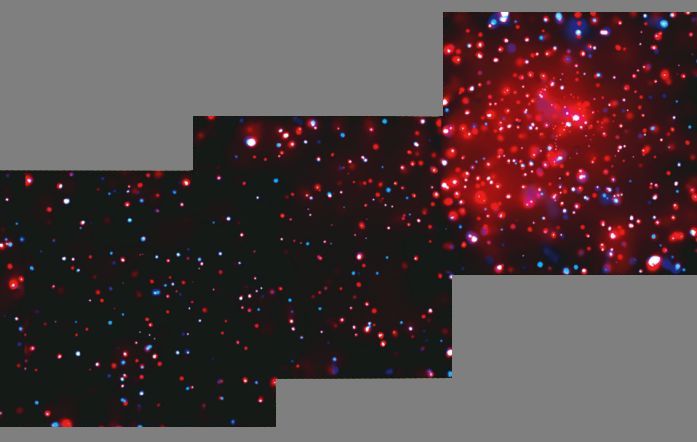Explanation: This mosaic of x-ray images cuts a swath across the photogenic Rosette Nebula, a stellar nursery 5,000 light-years from Earth in the constellation Monoceros, the Unicorn. Constructed from data recorded by the orbiting Chandra X-ray Observatory, the mosaic spans less than 100 light-years and is color coded to show low energies in red and high energy x-rays in blue. At the upper right is the young star cluster NGC 2244, central to the Rosette Nebula itself. The hot outer layers of the massive stars are seen to be copious sources of x-rays, but a diffuse x-ray glow also pervades this cluster of newborn stars. Since these stars are so young (less than few million years old!) the diffuse x-ray emission is thought to powered by energetic, colliding stellar winds rather than remnants of supernovae explosions, a final act in the life cycle of a massive star. Moving away from the center, south and east across the nebula (upper right to lower left), the hot, blustery environment gives way to dense molecular gas, absorbing low energy x-rays while revealing the penetrating high energy x-rays from embedded stars.
1999 2000 2001 2002 2003 2004 2005 2006 2007 2008 2009 2010 2011 2012 2013 2014 2015 2016 2017 2018 2019 2020 2021 2022 2023 2024 2025 |
Yanvar' Fevral' Mart Aprel' Mai Iyun' Iyul' Avgust Sentyabr' Oktyabr' Noyabr' Dekabr' |
NASA Web Site Statements, Warnings, and Disclaimers
NASA Official: Jay Norris. Specific rights apply.
A service of: LHEA at NASA / GSFC
& Michigan Tech. U.
|
Publikacii s klyuchevymi slovami:
rentgenovskoe izluchenie - Tumannost' Rozetka - zvezdnyi veter - Rosette Nebula - stellar wind
Publikacii so slovami: rentgenovskoe izluchenie - Tumannost' Rozetka - zvezdnyi veter - Rosette Nebula - stellar wind | |
Sm. takzhe:
Vse publikacii na tu zhe temu >> | |
